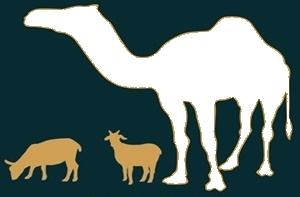Projet de développement de l’élevage camelin en Tunisie
Résumé
L’élevage du dromadaire joue un rôle socio-économique important dans le sud tunisien mais le nombre de dromadaires a connu ces dernières années une diminution importante de 120 000 à 56 000 en 2014. L’exportation illégale, le rendement faible de l’élevage, la modernisation de la vie des personnes et le manque d’investissement dans ce domaine sont les principales causes de cette diminution. Pour remédier à ce problème, l’état tunisien a proposé un programme national de développement et de recherche dans le domaine du dromadaire basé sur (1) l’encouragement des éleveurs par la subvention de l’élevage des femelles de remplacement et l’engraissement des chamelons, (2) l’amélioration des infrastructures dans les pâturages; notamment l’aménagement des points d’eau pour les animaux et (3) la promotion de la recherche appliquée dans les centres spécialisés. Les principaux thèmes de recherche sont axés sur la santé animale, l’alimentation des dromadaires et l’amélioration des zones de parcours, l’insémination artificielle et le transfert d’embryon et la sélection génétique des animaux. Dans le domaine de la biotechnologie de la reproduction, des essais ont été réalisés dans le typage génétique des dromadaires, la conservation du liquide séminal et l’insémination artificielle pour surmonter les difficultés particulières de la reproduction chez le dromadaire.
Mots-clés: Élevage, reproduction, biotechnologies, dromadaire, Tunisie
Téléchargements

Téléchargements
Publié-e
Comment citer
Numéro
Rubrique
Licence

Revue Marocaine des Sciences Agronomiques et Vétérinaires est mis à disposition selon les termes de la licence Creative Commons Attribution - Pas d’Utilisation Commerciale - Partage dans les Mêmes Conditions 4.0 International.
Fondé(e) sur une œuvre à www.agrimaroc.org.
Les autorisations au-delà du champ de cette licence peuvent être obtenues à www.agrimaroc.org.
